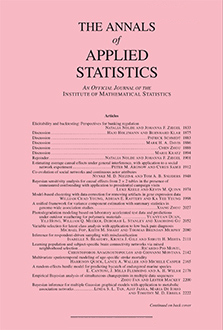Abstract
In computational neuroscience, it is important to estimate well the proportion of signal variance in the total variance of neural activity measurements. This explainable variance measure helps neuroscientists assess the adequacy of predictive models that describe how images are encoded in the brain. Complicating the estimation problem are strong noise correlations, which may confound the neural responses corresponding to the stimuli. If not properly taken into account, the correlations could inflate the explainable variance estimates and suggest false possible prediction accuracies.
We propose a novel method to estimate the explainable variance in functional MRI (fMRI) brain activity measurements when there are strong correlations in the noise. Our shuffle estimator is nonparametric, unbiased, and built upon the random effect model reflecting the randomization in the fMRI data collection process. Leveraging symmetries in the measurements, our estimator is obtained by appropriately permuting the measurement vector in such a way that the noise covariance structure is intact but the explainable variance is changed after the permutation. This difference is then used to estimate the explainable variance. We validate the properties of the proposed method in simulation experiments. For the image-fMRI data, we show that the shuffle estimates can explain the variation in prediction accuracy for voxels within the primary visual cortex (V1) better than alternative parametric methods.
Citation
Yuval Benjamini. Bin Yu. "The shuffle estimator for explainable variance in fMRI experiments." Ann. Appl. Stat. 7 (4) 2007 - 2033, December 2013. https://doi.org/10.1214/13-AOAS681
Information





